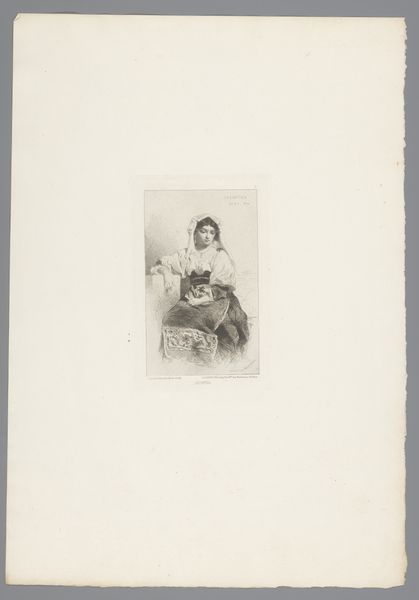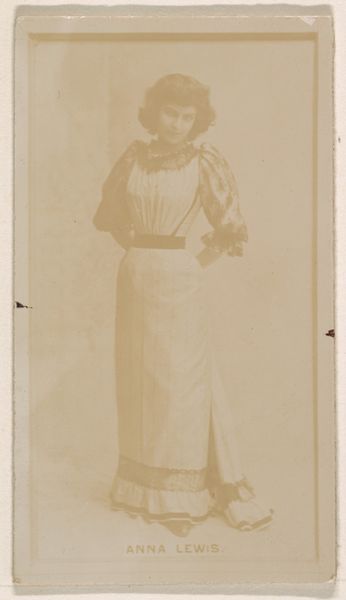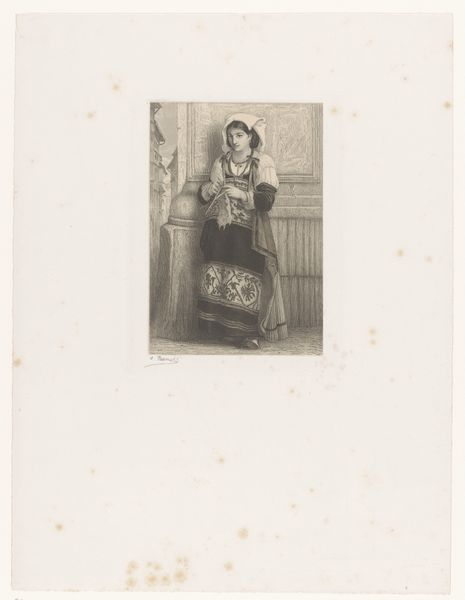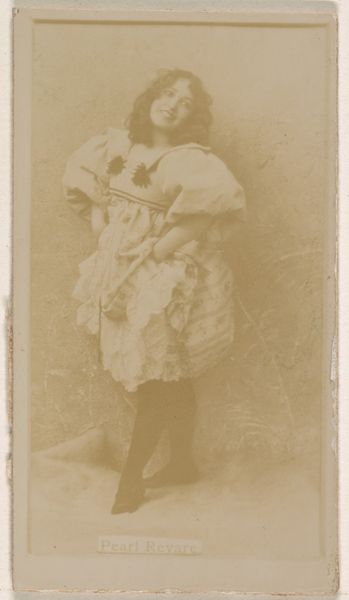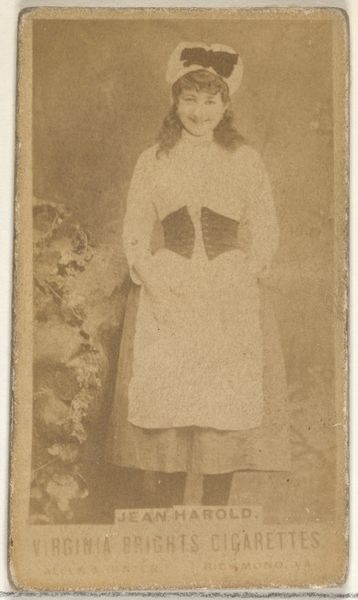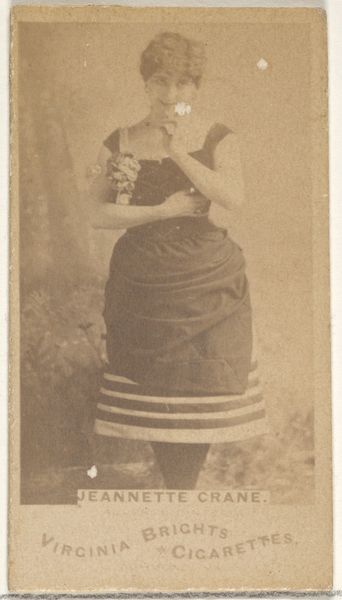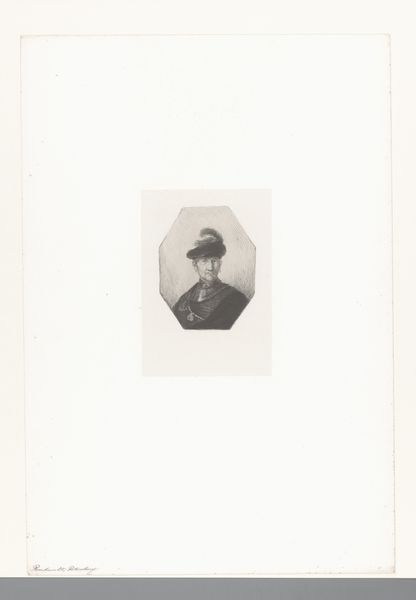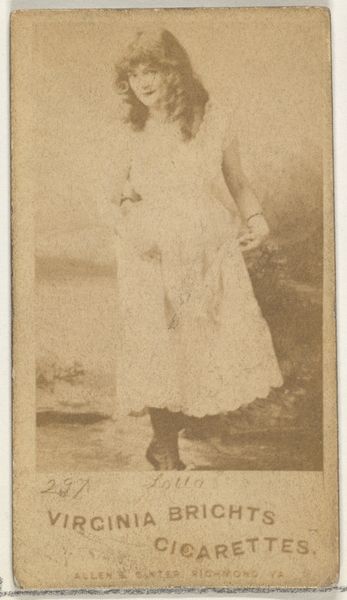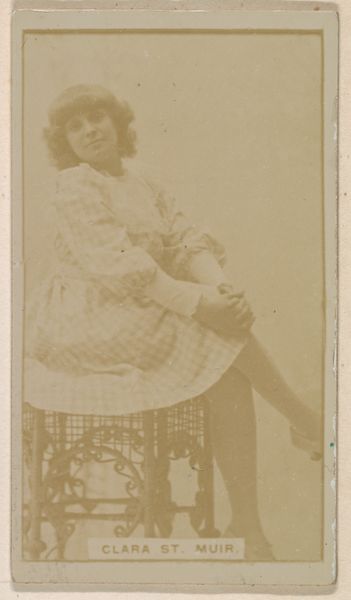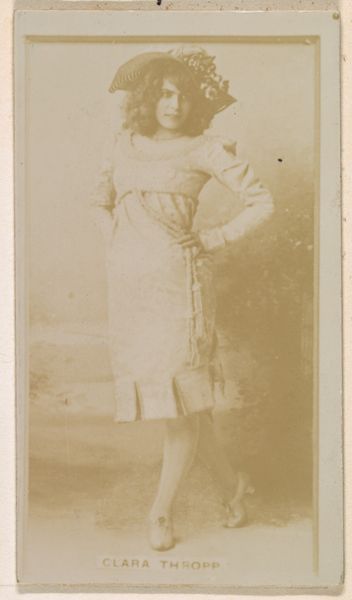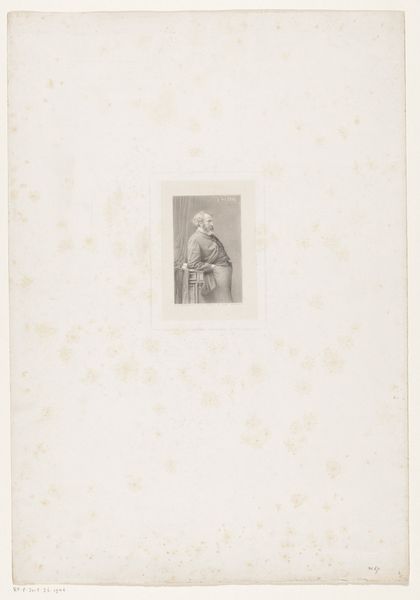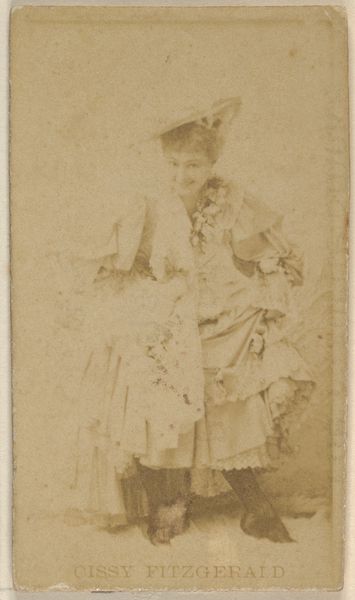
print, engraving
# print
#
genre-painting
#
engraving
Dimensions: height 245 mm, width 117 mm
Copyright: Rijks Museum: Open Domain
Curator: Ah, this engraving of an unknown young woman from sometime between 1857 and 1914! I am drawn to her enigmatic air; she seems like she knows something I don't. Editor: It’s stark, isn't it? So much blank paper around that tiny figure, really focusing all the attention on the representation itself. I immediately start to consider how accessible this type of printed image would have been. Curator: And yet, there's a dreamy quality too. Maybe it’s the soft gradations of light created by the engraving that makes her seem a little wistful, like she's stepped out of a forgotten novel. Look at her expression— is it defiance, or just a hint of sadness? Editor: Or consider the time involved. This wasn't some mass-produced, easily consumed product. Someone sat, painstakingly etching this plate, a physical manifestation of labor that results in multiples but still speaks of singular dedication to craft, in a way photographs didn't quite at the time. Was this affordable enough for the masses, or still just attainable for the growing middle class? Curator: True! There's such skill embedded into this delicate image. It's so finely done, and yet it remains intimate, like finding a discarded photograph. What does this availability suggest? To think that she’s here on this paper, existing simultaneously everywhere at once, available, known to a limitless group, changes how we read her, right? The potential audience completely alters the experience for the artist and us. Editor: Exactly. So we have this combination: detailed work making multiples that allow consumption on a broader scale—blurring the lines between artistic value and commodity value, but also building some idea of a collective identity. Her portrait moves from a private thing, commissioned and owned by family or friends, to a symbol, something public and consumable. It suggests new roles for art in the modern world. Curator: I appreciate you putting this image in such a concrete, approachable perspective. I was too carried away in that elegant face... and this is why I love prints: how art gets reproduced for an expanding population makes them more democratic and, at the same time, reveals economic values. Editor: That interplay between the singular, skilled gesture and this new form of wider dissemination – the artist grappling with reproducibility, so to speak, has my attention far beyond the charm of the sitter!
Comments
No comments
Be the first to comment and join the conversation on the ultimate creative platform.
